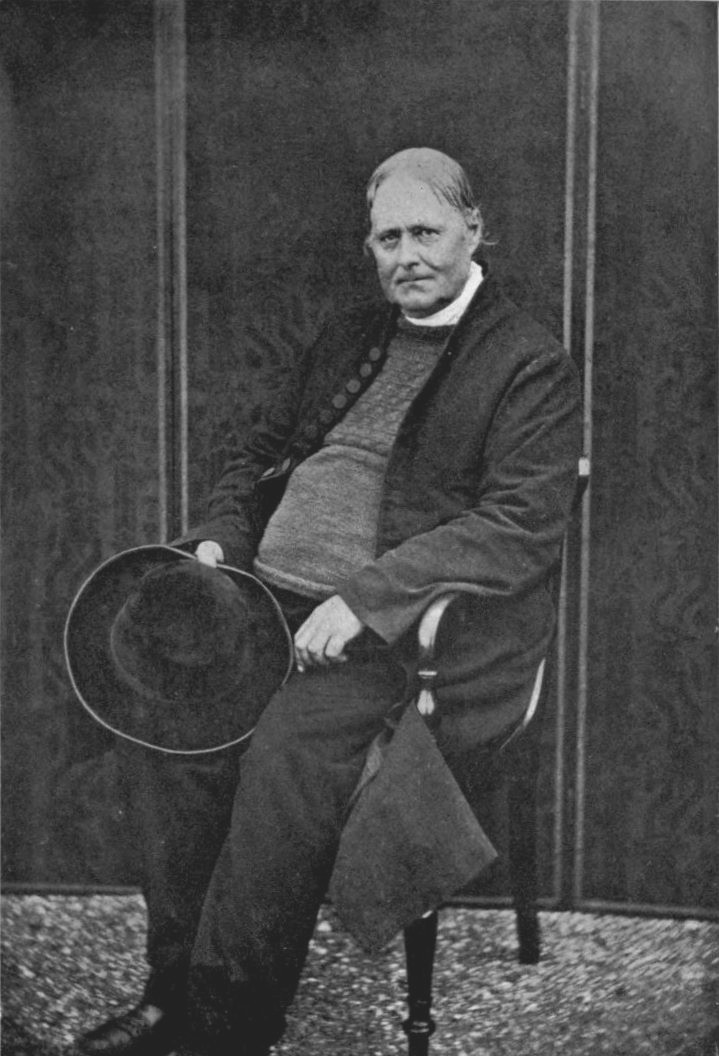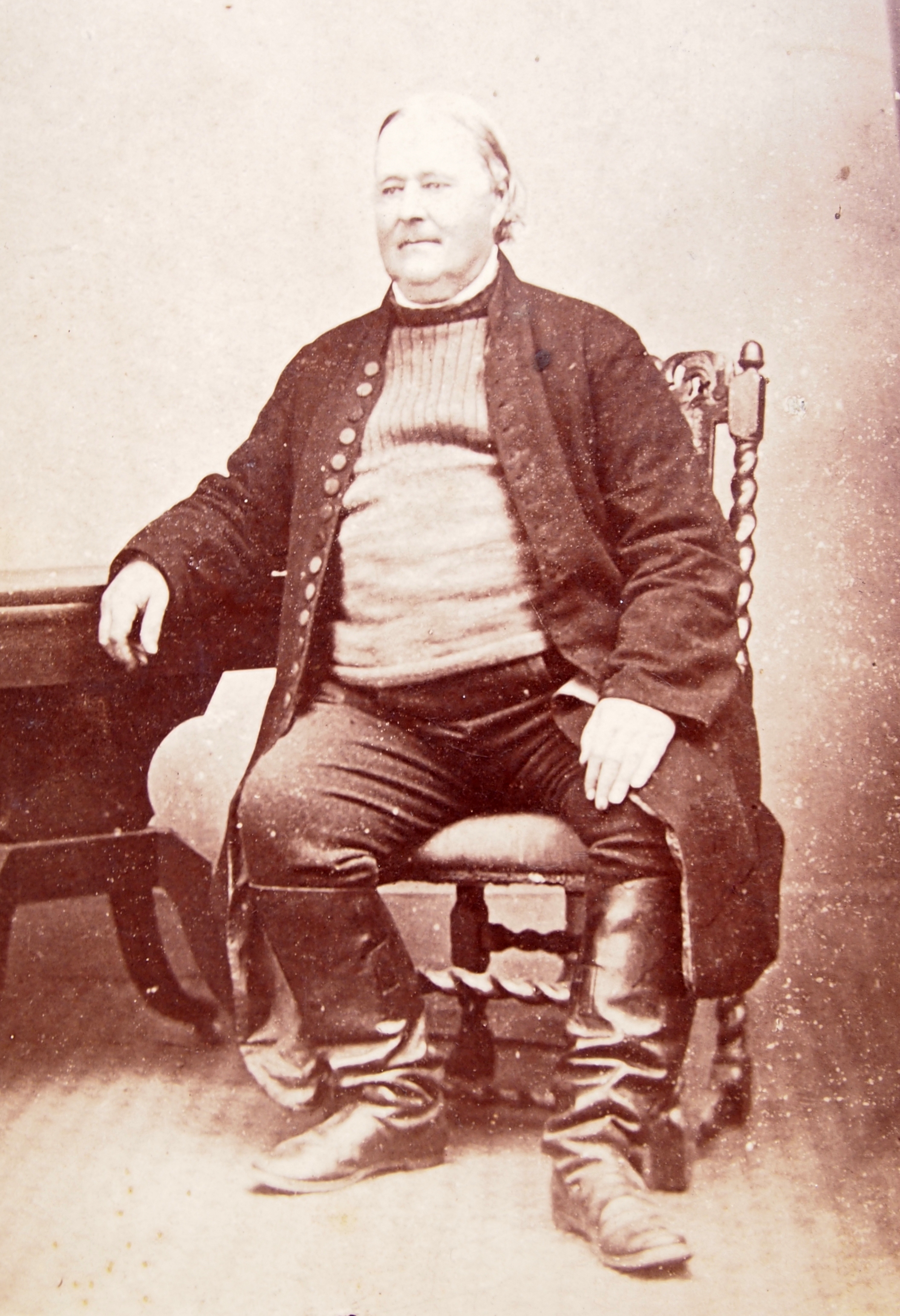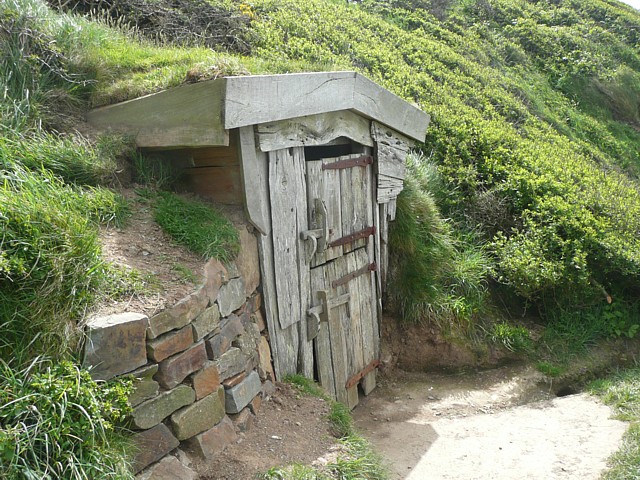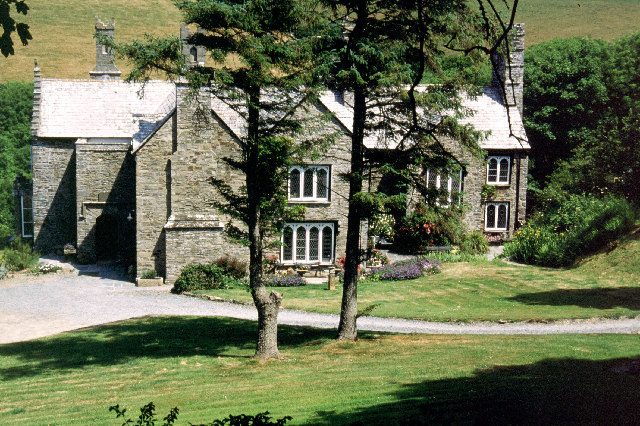Robert Stephen Hawker on:
[Wikipedia]
[Google]
[Amazon]

 Robert Stephen Hawker (1803–1875) was a British Anglican priest, poet, antiquarian and reputed eccentric, known to his parishioners as Parson Hawker. He is best known as the writer of " The Song of the Western Men" with its chorus line of "And shall Trelawny die? / Here's twenty thousand Cornish men / will know the reason why!", which he published anonymously in 1825. His name became known after
Robert Stephen Hawker (1803–1875) was a British Anglican priest, poet, antiquarian and reputed eccentric, known to his parishioners as Parson Hawker. He is best known as the writer of " The Song of the Western Men" with its chorus line of "And shall Trelawny die? / Here's twenty thousand Cornish men / will know the reason why!", which he published anonymously in 1825. His name became known after
 Hawker was regarded as a deeply compassionate person giving Christian burials to shipwrecked seamen washed up on the shores of the parish, and was often the first to reach the cliffs when there was a shipwreck. Formerly, the bodies of shipwrecked sailors were often either buried on the beach where they were found or left in the sea. The figurehead of the ship ''Caledonia'', which foundered in September 1842, marks the grave in Morwenstow churchyard of five of the nine-man crew. Hawker described the wrecking in his book ''Footprints of Former Men in Far Cornwall''. Nearby stands a granite cross marked "Unknown Yet Well Known", close to the graves of 30 or more seafarers, including the captain of the ''Alonzo'', wrecked in 1843.
Another notable rescue effort was occasioned by the ''Martha Quayle'' of Liverpool on 4 December 1863. This vessel was seen dismasted off Hennacliff with the crew making the best of their situation; two boats were lowered from the side of which one was driven northward by the heavy seas while the other came ashore unmanned. The first boat was seen by Hawker being rowed by five men but did not make a landing until
Hawker was regarded as a deeply compassionate person giving Christian burials to shipwrecked seamen washed up on the shores of the parish, and was often the first to reach the cliffs when there was a shipwreck. Formerly, the bodies of shipwrecked sailors were often either buried on the beach where they were found or left in the sea. The figurehead of the ship ''Caledonia'', which foundered in September 1842, marks the grave in Morwenstow churchyard of five of the nine-man crew. Hawker described the wrecking in his book ''Footprints of Former Men in Far Cornwall''. Nearby stands a granite cross marked "Unknown Yet Well Known", close to the graves of 30 or more seafarers, including the captain of the ''Alonzo'', wrecked in 1843.
Another notable rescue effort was occasioned by the ''Martha Quayle'' of Liverpool on 4 December 1863. This vessel was seen dismasted off Hennacliff with the crew making the best of their situation; two boats were lowered from the side of which one was driven northward by the heavy seas while the other came ashore unmanned. The first boat was seen by Hawker being rowed by five men but did not make a landing until
 The
The
 *1821: ''Tendrils''
*1832: ''Records of the Western Shore'' Oxford
*1840: ''Ecclesia: a volume of poems'' Oxford
*1843: ''Reeds Shaken with the Wind''
*1846: ''Echoes from Old Cornwall''
*1864
*1821: ''Tendrils''
*1832: ''Records of the Western Shore'' Oxford
*1840: ''Ecclesia: a volume of poems'' Oxford
*1843: ''Reeds Shaken with the Wind''
*1846: ''Echoes from Old Cornwall''
*1864
''The Quest of the Sangraal: Chant the First''
Exeter; (part of an unfinished
Robert Stephen Hawker: his life and writings
* * * * * * {{DEFAULTSORT:Hawker, Robert Stephen 1803 births 1875 deaths Writers from Cornwall English antiquarians Anglican poets Clergy from Plymouth, Devon Alumni of Pembroke College, Oxford English Roman Catholics Anglican priest converts to Roman Catholicism 19th-century English Anglican priests People educated at Pate's Grammar School Burials in Devon People educated at Liskeard Grammar School English male poets 19th-century English poets 19th-century English male writers English male non-fiction writers Writers from Plymouth, Devon

Charles Dickens
Charles John Huffam Dickens (; 7 February 1812 – 9 June 1870) was an English writer and social critic. He created some of the world's best-known fictional characters and is regarded by many as the greatest novelist of the Victorian e ...
acknowledged his authorship of "The Song of the Western Men" in the serial magazine '' Household Words''.
Biography
Hawker was born in theclergy house
A clergy house is the residence, or former residence, of one or more priests or ministers of religion. Residences of this type can have a variety of names, such as manse, parsonage, rectory or vicarage.
Function
A clergy house is typically ow ...
of Charles Church, Plymouth
Charles Church is a now derelict church, the second most ancient parish church in Plymouth, Devon, England. It was founded around 1640, but not completed for many years. It is a Gothic style church, consisting of a west tower, with spire, a n ...
, on 3 December 1803. He was the eldest of nine children and grandson of Robert Hawker, vicar of Charles Church. When he was about ten years old his father, Jacob Stephen Hawker, took Holy Orders and left Plymouth to become curate of Altarnun
Altarnun ( ; kw, Alternonn) is a village and civil parish in Cornwall, England, United Kingdom. It is located west of Launceston on the north-eastern edge of Bodmin Moor at .
The parish of Altarnun includes the village of Fivelanes and the ha ...
, leaving him in the care of his grandparents. By this time Hawker was already reading and writing poetry. He was educated at Liskeard Grammar School and Cheltenham Grammar School (now Pate's Grammar School
en, That which is hidden shall be revealed
, established =
, closed =
, type = Grammar school;Academy
, religion =
, president =
, head_label =
, head = Russel Ellicott
, r_head_label =
, r_head =
, chair_label =
, chair =
, founder ...
). As an undergraduate, aged 19, he married Charlotte Eliza I'ans, aged 41. The couple spent their honeymoon at Tintagel in 1823, a place that kindled his lifelong fascination with Arthurian legend
The Matter of Britain is the body of medieval literature and legendary material associated with Great Britain and Brittany and the legendary kings and heroes associated with it, particularly King Arthur. It was one of the three great Wester ...
and later inspired him to write ''The Quest of the Sangraal''. This marriage, along with a legacy, helped to finance his studies at Pembroke College, Oxford. He graduated in 1827 and won the 1827 Newdigate Prize for poetry.
Hawker was ordained in 1831, becoming curate at North Tamerton and then, in 1834, vicar of the church
Church may refer to:
Religion
* Church (building), a building for Christian religious activities
* Church (congregation), a local congregation of a Christian denomination
* Church service, a formalized period of Christian communal worship
* C ...
at Morwenstow, where he remained throughout his life. When he arrived at Morwenstow there had not been a vicar
A vicar (; Latin: '' vicarius'') is a representative, deputy or substitute; anyone acting "in the person of" or agent for a superior (compare "vicarious" in the sense of "at second hand"). Linguistically, ''vicar'' is cognate with the English pre ...
in residence for over a century. Smugglers
Smuggling is the illegal transportation of objects, substances, information or people, such as out of a house or buildings, into a prison, or across an international border, in violation of applicable laws or other regulations.
There are various ...
and wreckers were apparently numerous in the area. A contemporary report says the Morwenstow wreckers "allowed a fainting brother to perish in the sea ... without extending a hand of safety."
Hawker's first wife, Charlotte, died in 1863 and the following year, aged 60, he married Pauline Kuczynski, aged 20. They had three daughters, Morwenna Pauline Hawker, Rosalind Hawker and Juliot Hawker. Robert Hawker died on 15 August 1875, having become a Roman Catholic on his deathbed. He was buried in Plymouth's Ford Park Cemetery
Ford Park Cemetery is a cemetery in central Plymouth, England, established by the Plymouth, Stonehouse & Devonport Cemetery Company in 1846 and opened in 1848. At the time it was outside the boundary of the Three Towns and was created to all ...
. His funeral was noteworthy because the mourners wore purple instead of the traditional black.
Accomplishments
Shipwrecks
 Hawker was regarded as a deeply compassionate person giving Christian burials to shipwrecked seamen washed up on the shores of the parish, and was often the first to reach the cliffs when there was a shipwreck. Formerly, the bodies of shipwrecked sailors were often either buried on the beach where they were found or left in the sea. The figurehead of the ship ''Caledonia'', which foundered in September 1842, marks the grave in Morwenstow churchyard of five of the nine-man crew. Hawker described the wrecking in his book ''Footprints of Former Men in Far Cornwall''. Nearby stands a granite cross marked "Unknown Yet Well Known", close to the graves of 30 or more seafarers, including the captain of the ''Alonzo'', wrecked in 1843.
Another notable rescue effort was occasioned by the ''Martha Quayle'' of Liverpool on 4 December 1863. This vessel was seen dismasted off Hennacliff with the crew making the best of their situation; two boats were lowered from the side of which one was driven northward by the heavy seas while the other came ashore unmanned. The first boat was seen by Hawker being rowed by five men but did not make a landing until
Hawker was regarded as a deeply compassionate person giving Christian burials to shipwrecked seamen washed up on the shores of the parish, and was often the first to reach the cliffs when there was a shipwreck. Formerly, the bodies of shipwrecked sailors were often either buried on the beach where they were found or left in the sea. The figurehead of the ship ''Caledonia'', which foundered in September 1842, marks the grave in Morwenstow churchyard of five of the nine-man crew. Hawker described the wrecking in his book ''Footprints of Former Men in Far Cornwall''. Nearby stands a granite cross marked "Unknown Yet Well Known", close to the graves of 30 or more seafarers, including the captain of the ''Alonzo'', wrecked in 1843.
Another notable rescue effort was occasioned by the ''Martha Quayle'' of Liverpool on 4 December 1863. This vessel was seen dismasted off Hennacliff with the crew making the best of their situation; two boats were lowered from the side of which one was driven northward by the heavy seas while the other came ashore unmanned. The first boat was seen by Hawker being rowed by five men but did not make a landing until Clovelly
Clovelly () is a privately-owned harbour village in the Torridge district of Devon, England. The settlement and surrounding land belongs to John Rous who inherited it from his mother in 1983. He belongs to the Hamlyn family who have managed t ...
. An attempt to launch the Bude lifeboat or bring her along the land failed but by riding along the coast as far as Clovelly Hawker found the mate and four crewmen safe. He failed to persuade the men of Clovelly to launch a skiff but a customs officer from Bideford happened to be there and was able to send a message to the Appledore lifeboatmen to assist if they could. The ''Martha Quayle'' was unlighted by Saturday nightfall. On the Sunday he sent a man towards Clovelly and sometime later that man brought thanks for their deliverance from the captain and crew back to Hawker. A rowing boat crewed by 19 men went north and jointly with the Appledore lifeboatmen who had brought their boat by land got the ''Martha Quayle'' on shore ready to be sold by auction next day.
Ritual innovation, eccentricity; hut and vicarage
 The
The Harvest Festival
A harvest festival is an annual celebration that occurs around the time of the main harvest of a given region. Given the differences in climate and crops around the world, harvest festivals can be found at various times at different places. ...
that we know today was introduced in the parish of Morwenstow in 1843 by Hawker. He invited his parishioners to a Harvest service as he wanted to give thanks to God for providing such plenty. This service took place on 1 October and bread made from the first cut of corn was taken at communion.
"Parson Hawker", as he was known to his parishioners, was something of an eccentric, both in his clothes and his habits. He loved bright colours and it seems the only black things he wore were his socks. He built a small hut, that became known as Hawker's Hut, from driftwood on the cliffs overlooking the Atlantic Ocean. He spent many hours there writing his poems and letters. This driftwood hut is now the smallest property in the National Trust
The National Trust, formally the National Trust for Places of Historic Interest or Natural Beauty, is a charity and membership organisation for heritage conservation in England, Wales and Northern Ireland. In Scotland, there is a separate and ...
portfolio. Many of the more fantastic stories told about Hawker are based on an unreliable biography published by the Reverend Sabine Baring-Gould
Sabine Baring-Gould ( ; 28 January 1834 – 2 January 1924) of Lew Trenchard in Devon, England, was an Anglican priest, hagiographer, antiquarian, novelist, folk song collector and eclectic scholar. His bibliography consists of more than 1,2 ...
in 1876, only a few months after Hawker's death. Other eccentricities attributed to him include dressing up as a mermaid
In folklore, a mermaid is an aquatic creature with the head and upper body of a female human and the tail of a fish. Mermaids appear in the folklore of many cultures worldwide, including Europe, Asia, and Africa.
Mermaids are sometimes ass ...
and excommunicating
Excommunication is an institutional act of religious censure used to end or at least regulate the communion of a member of a congregation with other members of the religious institution who are in normal communion with each other. The purpose ...
his cat for mousing on Sundays. He dressed in claret-coloured coat, blue fisherman's jersey, long sea-boots, a pink brimless hat and a poncho
A poncho (; qu, punchu; arn, pontro; "blanket", "woolen fabric") is an outer garment designed to keep the body warm. A rain poncho is made from a watertight material designed to keep the body dry from the rain. Ponchos have been used by the ...
made from a yellow horse blanket, which he claimed was the ancient habit of St Padarn
Padarn ( la, Paternus, Padarnus; cy, Padarn; br, Padern; ? – 550 AD) was an early 6th century British Christian abbot-bishop who founded St Padarn's Church in Ceredigion, Wales. He appears to be one and the same with the first bishop of Bra ...
. He talked to birds, invited his nine cats into church and kept a pig as a pet.
He built himself a remarkable vicarage, with chimneys modelled on the towers of the churches in his life: Tamerton, where he had been curate; Morwenstow and Welcombe; plus that of Magdalen College, Oxford. The old kitchen chimney is a replica of Hawker's mother's tomb.
Of his interesting life, Hawker himself wrote: "What a life mine would be if it were all written and published in a book."
The American poet Joyce Kilmer
Alfred Joyce Kilmer (December 6, 1886 – July 30, 1918) was an American writer and poet mainly remembered for a short poem titled "Trees" (1913), which was published in the collection ''Trees and Other Poems'' in 1914. Though a prolific poet wh ...
described him as "a coast life-guard in a cassock" and was to some extent influenced by Hawker's poetry.Hillis, John. ''Joyce Kilmer: A Bio-Bibliography''. Master of Science (Library Science) thesis. Catholic University of America, Washington, DC; 1962; p. 19
Works
 *1821: ''Tendrils''
*1832: ''Records of the Western Shore'' Oxford
*1840: ''Ecclesia: a volume of poems'' Oxford
*1843: ''Reeds Shaken with the Wind''
*1846: ''Echoes from Old Cornwall''
*1864
*1821: ''Tendrils''
*1832: ''Records of the Western Shore'' Oxford
*1840: ''Ecclesia: a volume of poems'' Oxford
*1843: ''Reeds Shaken with the Wind''
*1846: ''Echoes from Old Cornwall''
*1864''The Quest of the Sangraal: Chant the First''
Exeter; (part of an unfinished
Arthurian
King Arthur ( cy, Brenin Arthur, kw, Arthur Gernow, br, Roue Arzhur) is a legendary king of Britain, and a central figure in the medieval literary tradition known as the Matter of Britain.
In the earliest traditions, Arthur appears as a ...
poem)
*1870: ''Footprints of Former Men in Cornwall'' (a collection of papers)
*1908: ''Cornish Ballads & Other Poems'', introduction by C. E. Byles
*1975: ''Selected Poems: Robert Stephen Hawker''. Ed. Cecil Woolf
References and bibliography
*''The Poetical Works of Robert Stephen Hawker'' (1879); now first collected and arranged by J. G. Godwin; ncludes ''Notice'', pp. vii–xviii London: C. Kegan Paul *''The Life and Letters of R. S. Hawker (sometime Vicar of Morwenstow)'' (1906) by C. E. Byles. London: Bodley Head *''"Passon" Hawker of Morwenstow'' (959
Year 959 ( CMLIX) was a common year starting on Saturday (link will display the full calendar) of the Julian calendar.
Events
By place
Byzantine Empire
* April - May – The Byzantines refuse to pay the yearly tribute. A Hungari ...
; H. R. Smallcombe. Plymouth: he author*''The Wreck at Sharpnose Point'' (2003) by Jeremy Seal, Picador.
*''Hawker of Morwenstow'' (2002) by Piers Brendon, Random House.
*''The Land Near the Dark Cornish Sea'' (2004) by A. Hale, ''Journal for the Academic Study of Magic'', Issue 2, Pages 206–225
*”Reverend Hawker of Morwenstow" by 3 Daft Monkeys
3 Daft Monkeys are a world music-influenced acoustic band from Cornwall, UK, consisting of Tim Ashton, Athene Roberts, Rich Mulryne, and Jamie Graham. The instrumentation consists of vocals, fiddle, twelve-string guitar, bass guitar and percuss ...
. From the album "of stones and bones"
References
Bibliography
* *Woolf, Cecil (1965)."Hawker of Morwenstow, 1803-1875." ''The Book Collector
''The Book Collector'' is a London based journal that deals with all aspects of the book.
It is published quarterly and exists in both paper and digital form. It prints independent opinions on subjects ranging from typography to national heritage ...
'' 14 no 1 (spring): 62–71; 14 no 2 (summer): 202–211.
External links
Robert Stephen Hawker: his life and writings
* * * * * * {{DEFAULTSORT:Hawker, Robert Stephen 1803 births 1875 deaths Writers from Cornwall English antiquarians Anglican poets Clergy from Plymouth, Devon Alumni of Pembroke College, Oxford English Roman Catholics Anglican priest converts to Roman Catholicism 19th-century English Anglican priests People educated at Pate's Grammar School Burials in Devon People educated at Liskeard Grammar School English male poets 19th-century English poets 19th-century English male writers English male non-fiction writers Writers from Plymouth, Devon